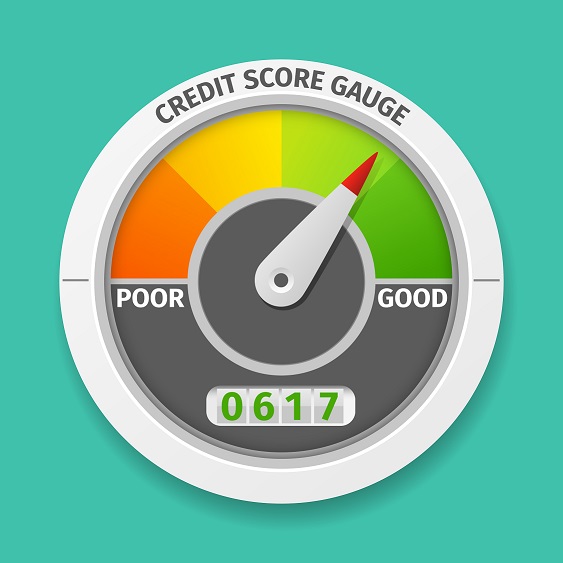How Is Your Credit Score Determined?

You know your credit score is a three-digit number, but do you know what that number means or, more specifically, how the credit bureaus calculate it? Chances are you, like most consumers, take your score at face value and don’t investigate too thoroughly into what it says about your spending or borrowing habits. However, it’s important that you understand what factors influence your credit score so you can know what measures to take to boost and maintain it.
Five Factors That Influence Your Credit Score
The factors that influence your credit score actually refer to the categories of information that show up in your report. There are dozens of credit scoring models that give weight to differing factors. However, the FICO scoring model, which is the most widely accepted, uses just five.
1. Payment History
Payment history is the biggest factor that affects your FICO score, accounting for 35% of your overall score. Your payment history tells the bureaus whether you regularly pay your bills on time or not.
The reason payment history carries so much weight is because it best reflects your level of risk. If you have a flawless payment history, you should not have any marks in this area, which tells the lenders you’re good for repayment. If you miss a payment here or there, your score will drop. However, if you follow up a single missed payment with months of on-time payments, your score should recover fairly quickly. If you’re notorious for making late payments, on the other hand, your score will continue to drop, indicating to lenders that you’re a high-risk borrower.
2. Credit Utilization
Your credit utilization rate—which refers to how much debt you carry compared to your total limit—accounts for roughly 30% of your overall score. Credit utilization factors in only your revolving debt, such as credit cards and home equity lines of credit.
Credit utilization tells lenders how responsible, or irresponsible, you are with your finances. A low utilization rate tells lenders that you know how to keep your debt to a manageable level. A consistently high rate, on the other hand, indicates that you may have overextended yourself. Lenders may also interpret a high rate to mean that you have a higher risk of defaulting.
To calculate your credit utilization rate, add up all your balances and divide it by your total limit. Multiply it by 100 to get a percentage. An ideal credit utilization rate is 30%, though lower is better.
3. Length of Credit History
The length of your credit history makes up 15% of your FICO score. To determine how well you fare in this category, the credit bureaus will consider the age of your oldest accounts, the age of your newest accounts and the average age of all your accounts.
4. Recent Activity
Recent activity typically refers to hard inquiries on your account, or how often and how recently you applied for new credit. This factor makes up 10% of your credit score. A hard inquiry stays on your report for two years and can ding your score by five to 10 points.
5. Credit Mix
The fifth and final factor the scoring agencies will consider is your credit mix. How well can you handle multiple types of credit? Types of credit the agencies like to see include credit cards, auto loans, retail cards, personal loans and home loans. This factor also accounts for 10% of your score.
A personal loan can help you boost your score in multiple ways. It can help you pay down debt quickly and on time, reduce your credit utilization rate and add to your credit mix. Learn more about how a personal loan can help you and your credit score.
